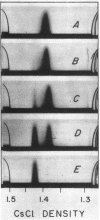Abstract
Huff, Eskin (National Institute of Allergy and Infectious Diseases, Bethesda, Md.), Harriet Oxley, and Carol S. Silverman. Density-gradient patterns of Staphylococcus aureus cells and cell walls during growth and mechanical disruption. J. Bacteriol. 88:1155–1162. 1964.—Procedures capable of rapid disruption of Staphylococcus aureus cells with optimal release of intact cell walls were investigated. This search was implemented by observation of the flotation patterns of cells and subcellular particulate matter after centrifugation in a cesium chloride density gradient. A quantitative evaluation of the light-scatter throughtout the gradient was achieved by transfer of the entire density gradient into an optical cell with wedge-shaped cross section. When this cell was photographed under indirect illumination, each band of light-scattering material appeared on the negative as a shaded curve, with an area proportional to amount of that material present. A series of photographs of known amounts of cells and cell walls was used to estimate the amounts of these materials in mixtures of the two occurring during mechanical disruption. With the methods employed, time studies established the optimal time for release of cell walls as 5 min in a Braun shaker. The use of sucrose gradients in the further purification of cell walls, and chemical analysis of the isolated walls, are described.
Full text
PDF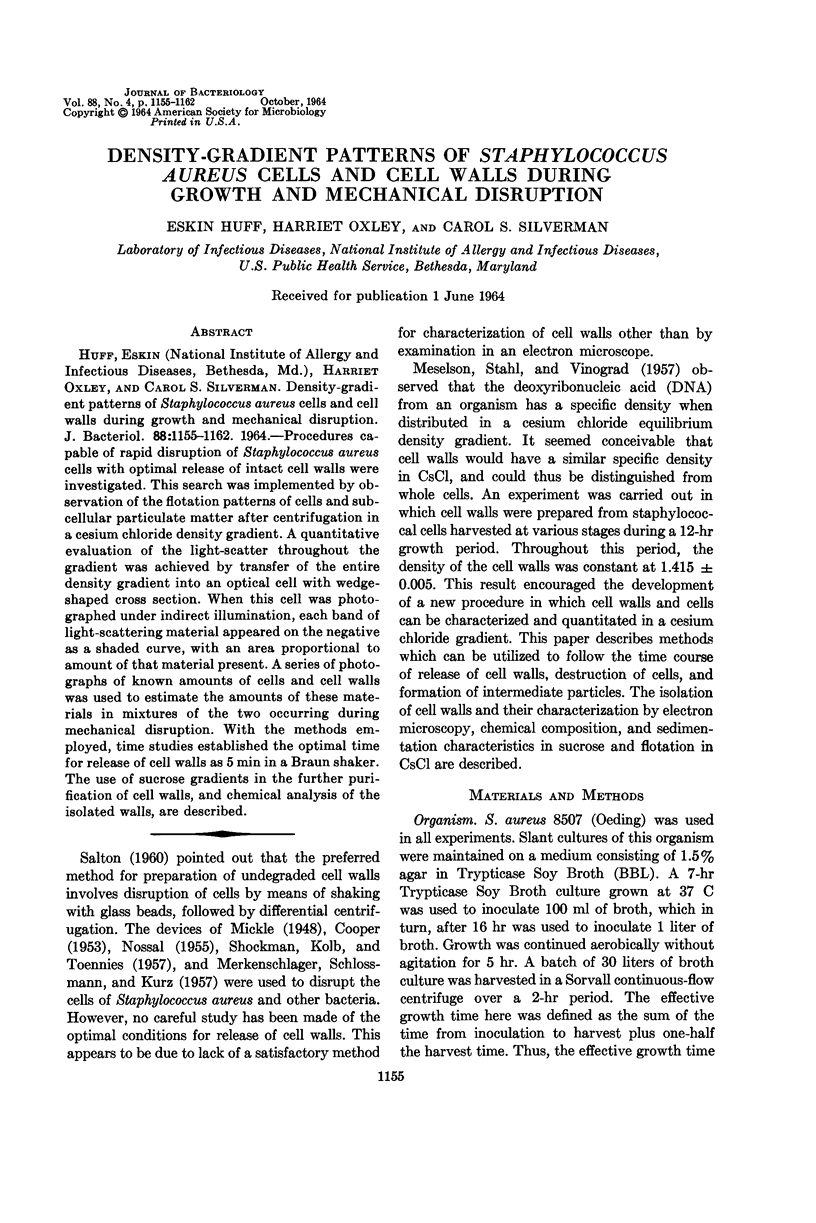
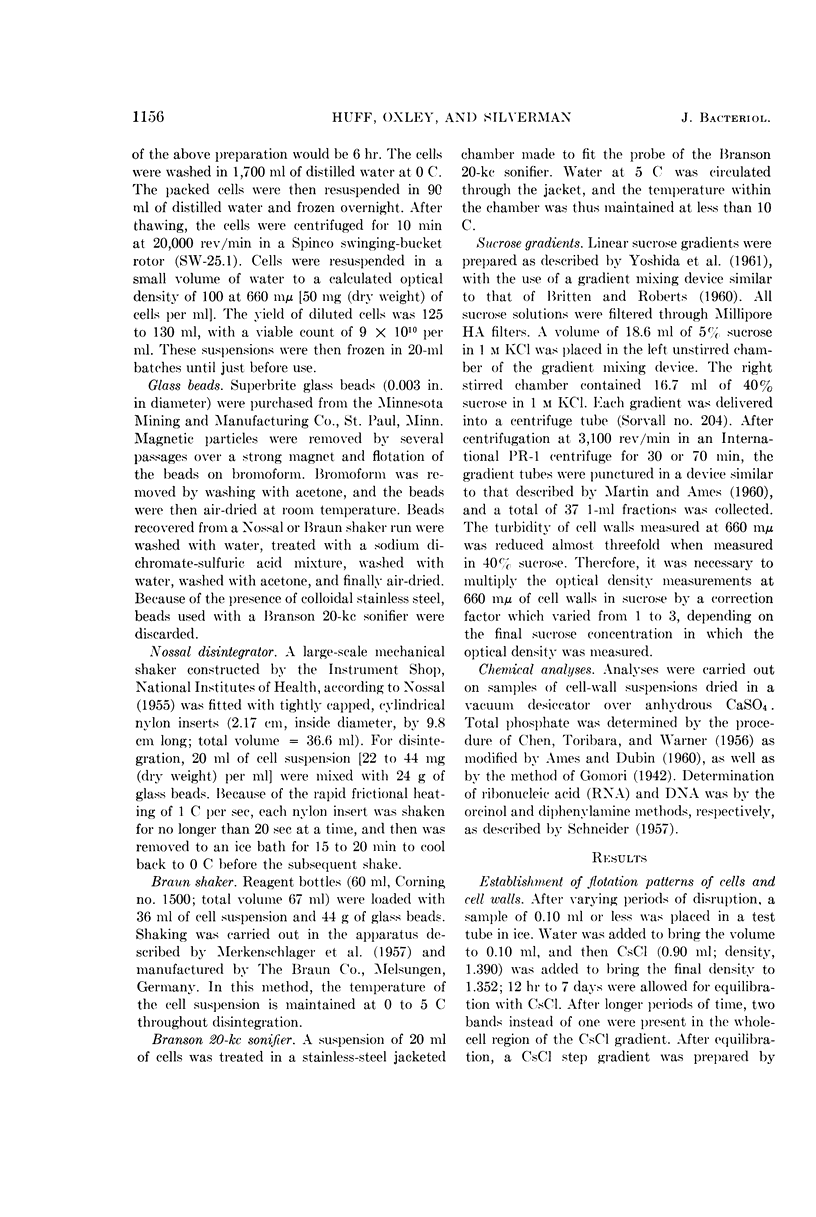
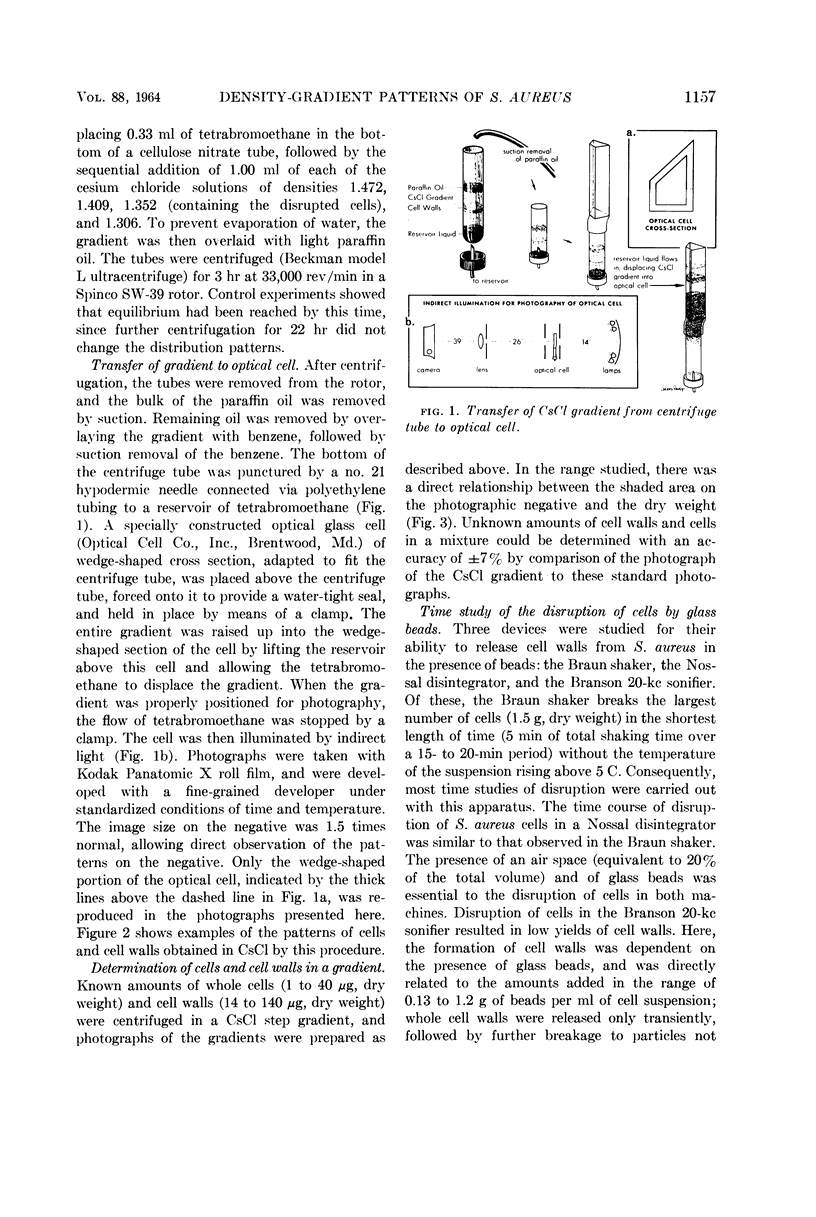
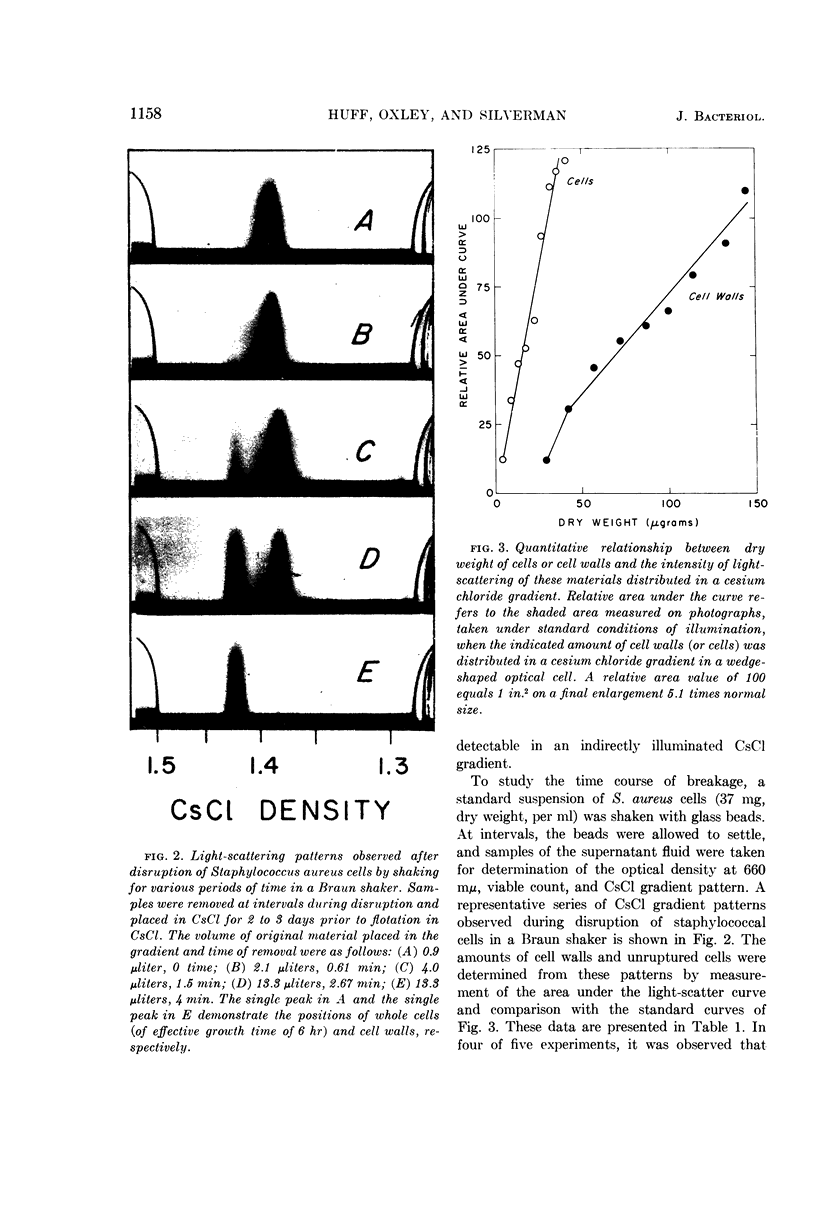
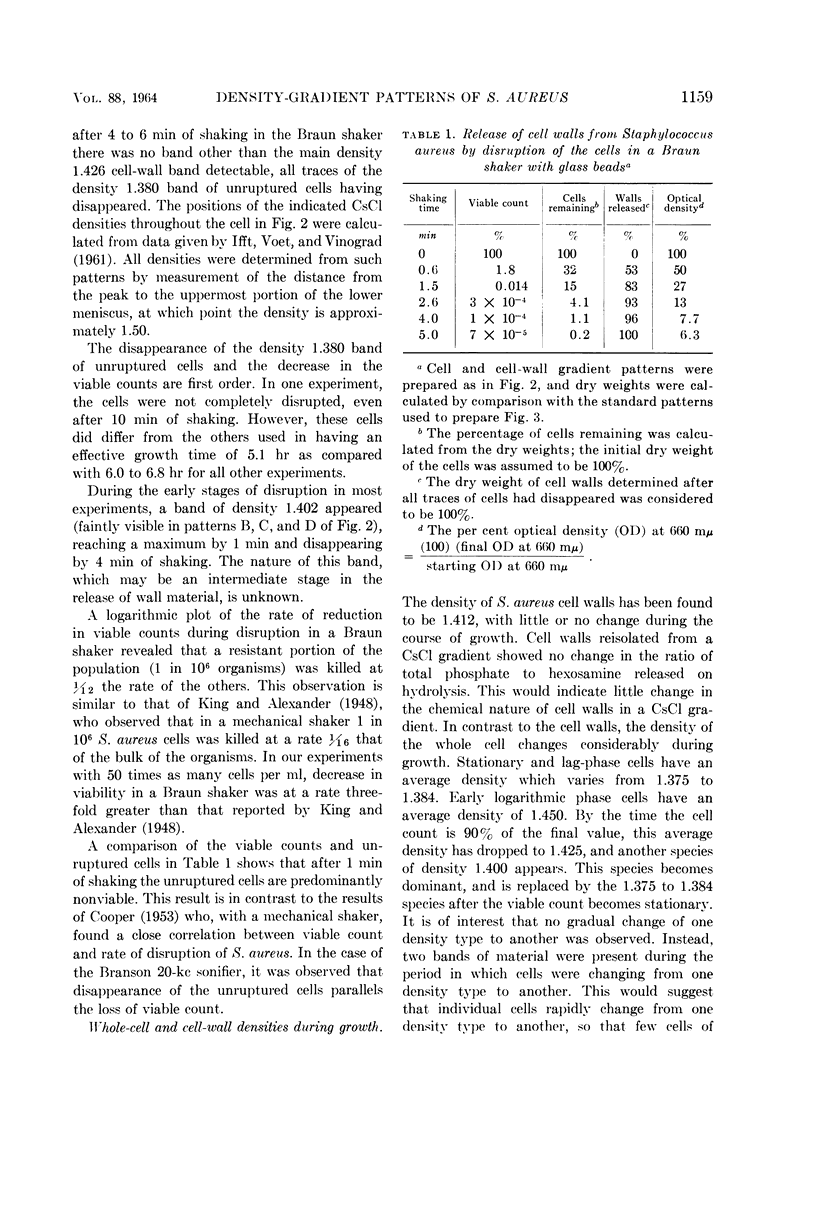
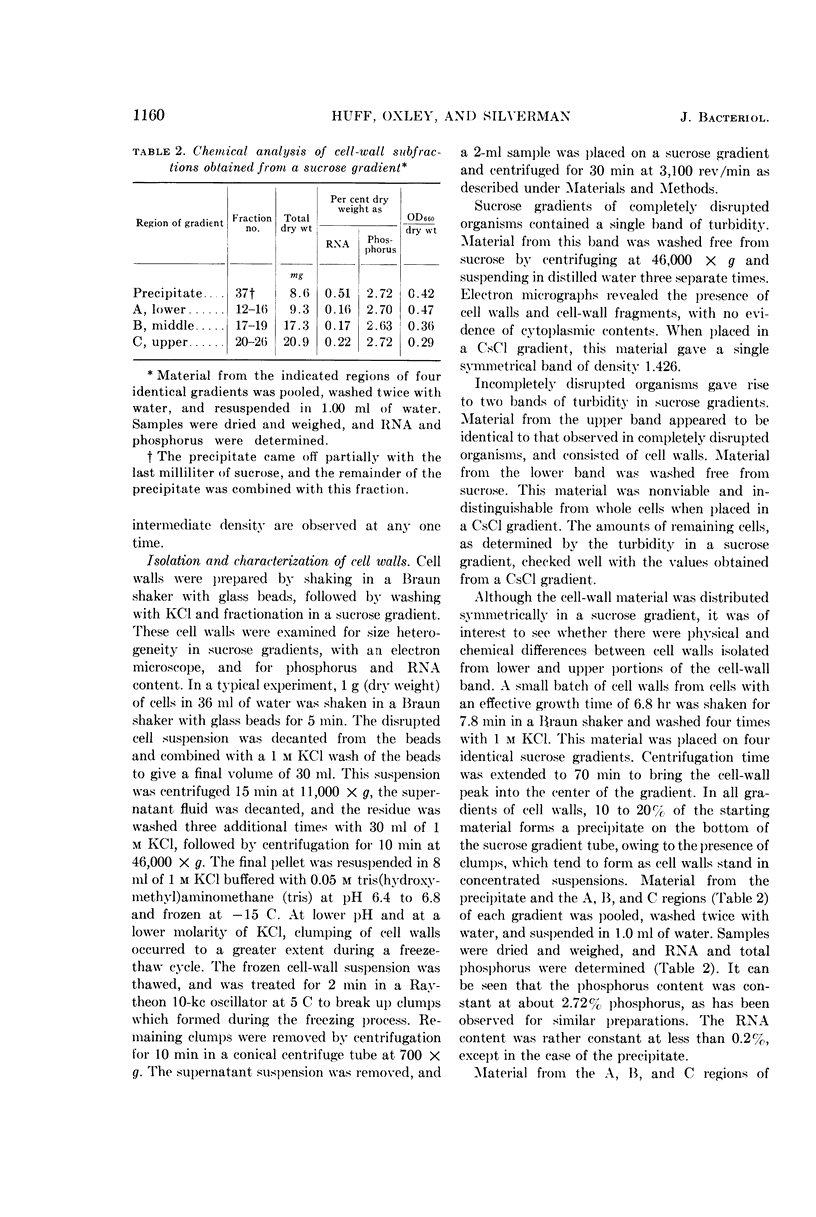
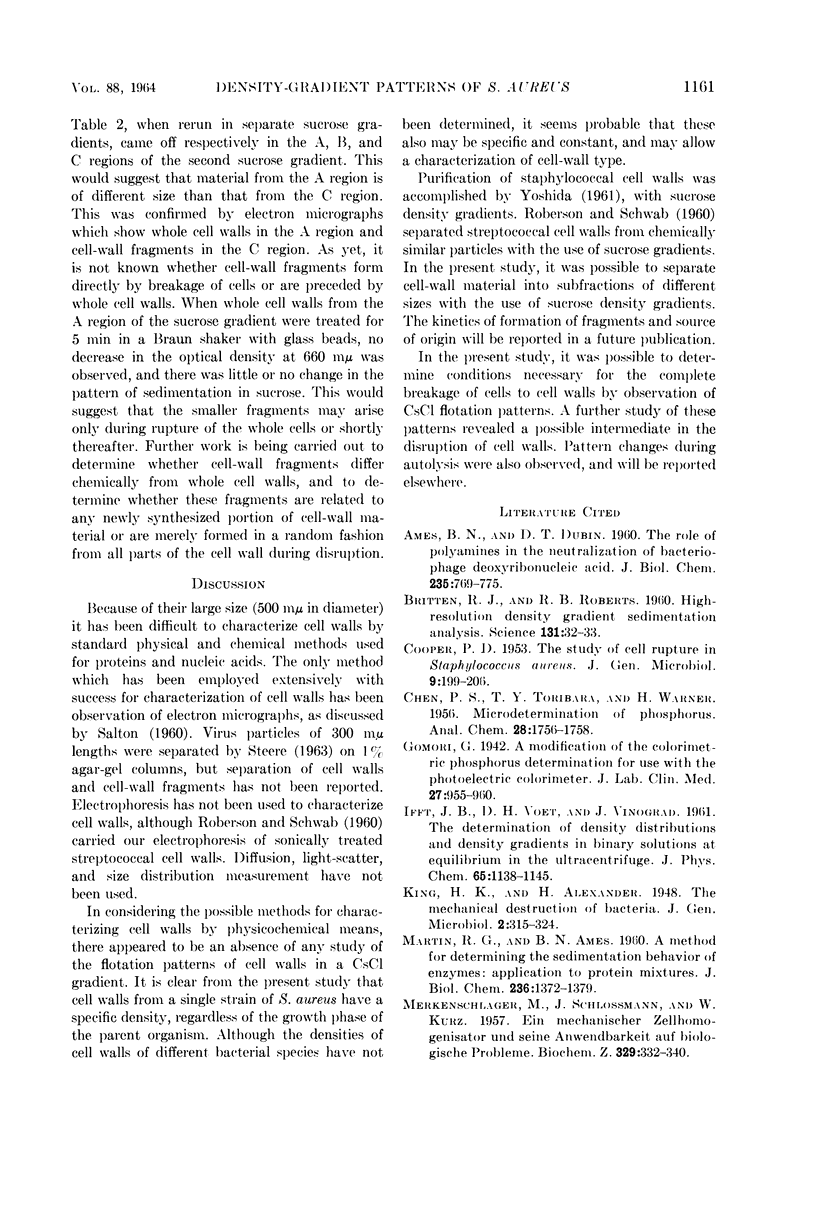
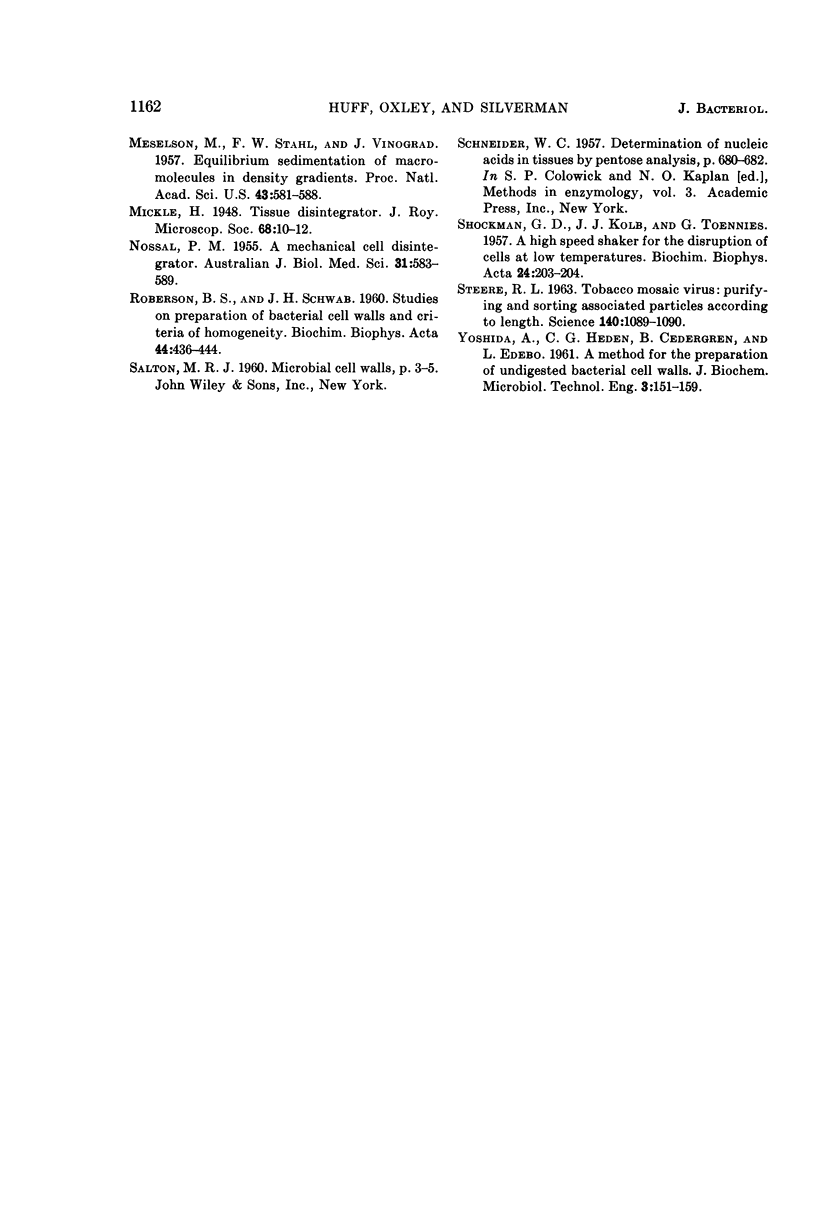
Images in this article
Selected References
These references are in PubMed. This may not be the complete list of references from this article.
- AMES B. N., DUBIN D. T. The role of polyamines in the neutralization of bacteriophage deoxyribonucleic acid. J Biol Chem. 1960 Mar;235:769–775. [PubMed] [Google Scholar]
- Britten R. J., Roberts R. B. High-Resolution Density Gradient Sedimentation Analysis. Science. 1960 Jan 1;131(3392):32–33. doi: 10.1126/science.131.3392.32. [DOI] [PubMed] [Google Scholar]
- COOPER P. D. The study of cell rupture in Staphylococcus aureus. J Gen Microbiol. 1953 Oct;9(2):199–206. doi: 10.1099/00221287-9-2-199. [DOI] [PubMed] [Google Scholar]
- Meselson M., Stahl F. W., Vinograd J. EQUILIBRIUM SEDIMENTATION OF MACROMOLECULES IN DENSITY GRADIENTS. Proc Natl Acad Sci U S A. 1957 Jul 15;43(7):581–588. doi: 10.1073/pnas.43.7.581. [DOI] [PMC free article] [PubMed] [Google Scholar]
- NOSSAL P. M. A mechanical cell disintegrator. Aust J Exp Biol Med Sci. 1953 Dec;31(6):583–589. doi: 10.1038/icb.1953.64. [DOI] [PubMed] [Google Scholar]
- SHOCKMAN G. D., KOLB J. J., TOENNIES G. A high speed shaker for the disruption of cells at low temperatures. Biochim Biophys Acta. 1957 Apr;24(1):203–204. doi: 10.1016/0006-3002(57)90168-3. [DOI] [PubMed] [Google Scholar]
- STEERE R. L. Tobacco mosaic virus: purifying and sorting associated particles accordig to length. Science. 1963 Jun 7;140(3571):1089–1090. doi: 10.1126/science.140.3571.1089. [DOI] [PubMed] [Google Scholar]



